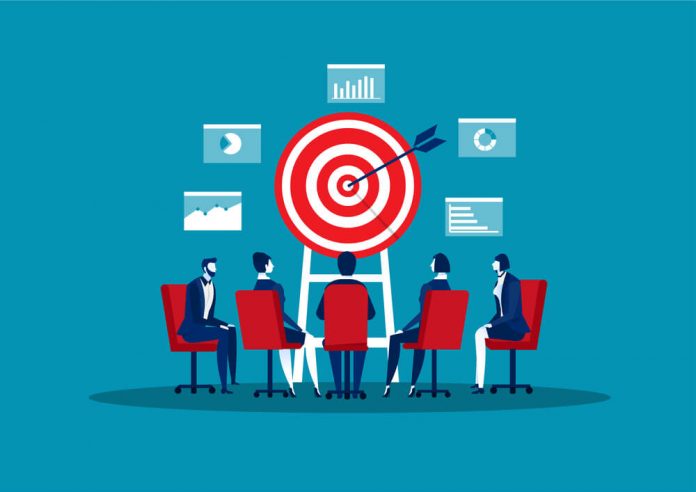
Corporate training can take any business to the next level. But it’s only valuable if it’s aligned with your business goals. Most organizations skip this key piece of the learning and development roadmap.
Companies that are clear on what they want to achieve with their training—increased engagement, a change in behavior, improved performance, or any other desired goal—and how they will measure it see the most value.
Here are three common corporate goals and some training tactics you can use to pursue and measure them:
Goal: Improved Learner Experiences
Some key performance indicators (KPIs) to track: increased engagement, sustained focus, improved retention
A recent SHRM research report showed that more than 1 in 10 employees are dissatisfied with the training they receive. That’s probably because training often still involves static PowerPoints, clunky software, or long reading materials.
When employees enjoy their training program, they become more engaged with the lesson and the company itself. They think: “Hey, this company values me enough to invest in my development.” And guess what that leads to? Sticking around longer.
There’s a whole world of channels and methods to choose from beyond PowerPoint.
For example, gamifying corporate training makes employees feel productive (87 percent), more engaged (84 percent), and happier at work (82 percent).
IT Cosmetics used games to help employees master the sales process. Being able to earn badges and redeem points for tangible rewards kept them coming back for more. Employees also could socialize with other coworkers in a learning community. The increased collaboration and connectivity made it easier for employees to stay in the know about all things happening within the company.
Gamification is just one example of a training experience that has a proven impact on employees. There are plenty of other methods, such as virtual reality (VR) and video-based courses, that can help you achieve your business goals.
Goal: Employee Growth
Some KPIs to track: reskilling and upskilling progress, improved confidence, changed behavior
Employee growth can mean a lot of things. Get specific on what you’re after, and then build learning programs that match it.
Let’s start with reskilling and upskilling. Seventy-six percent of employees say they are more inclined to stay at a company if it offers continuous learning and development. An effective reskilling and upskilling program needs to be centered around employees and personalized to their learning styles. You should be able to curate learning experiences that help employees bridge specific skill gaps in a comfortable environment.
For example, new managers or salespeople often seek to build confidence. But when struggling with self-doubt, many prefer a less stressful learning experience.
Paychex needed to find a way to revamp its sales onboarding process for new hires. On top of restructuring the way the material was presented and taught, the goal was to engage new employees by building confidence and accountability.
The process was structured around single-objective learning. This means employees were required to master one skill before moving onto the next. On top of this, employees worked with learning coaches and were able to demonstrate their skills face to face in video-based practice assignments.
This modality of training was instrumental to the employee reskilling process. Salespeople were given the opportunity to fully practice in a comfortable environment when recording their pitches with the new product information. Upon submitting their video, they were able to receive on-the-spot coaching and feedback to perfect their skills and hone in on both their confidence and competence in the new material.
In the long run, employees feel a sense of accomplishment when they master new material in a constructive manner. When their learning experience meets their needs, they are better equipped to tackle new responsibilities or skills.
Goal: Corporate Budget Efficiency
Some KPIs to track: reduce cost, reduce seat time, reduce turnover
A good training program requires investment, but it ultimately should save your organization money.
Reducing turnover is the most obvious example of this. The cost of recruiting is high, so any steps you can take to keep current employees engaged and growing saves money. Providing employees with the proper training and resources can accelerate the promotion process, giving employees a chance to advance internally.
But you also can use training to achieve cost efficiency in other areas.
For example, Fendi needed a quick and timely solution to train and raise awareness to more than 1,800 employees on how to prevent a costly problem: shoplifting.
Fendi used a VR tool where users create their own scenarios with a 360-degree video. Employees had to physically move on-screen images of different locations within the store to seek out shoplifting risks, such as an open drawer or unattended dressing rooms. This exercise developed and enhanced employees’ spatial awareness, giving them clear indicators of risk. Since implementation, Fendi conquered its goal of reducing thefts by 55 percent. You can see how this improvement would work wonders on a corporate budget, too.
Employee training and improved business results should work hand-in-hand. Unfortunately, more often, the left hand doesn’t know what the right one is doing. You can get more out of your training programs by identifying your business goals and choosing strategies that will help you achieve them. Corporate learning is one of those strategies that shouldn’t be overlooked.



